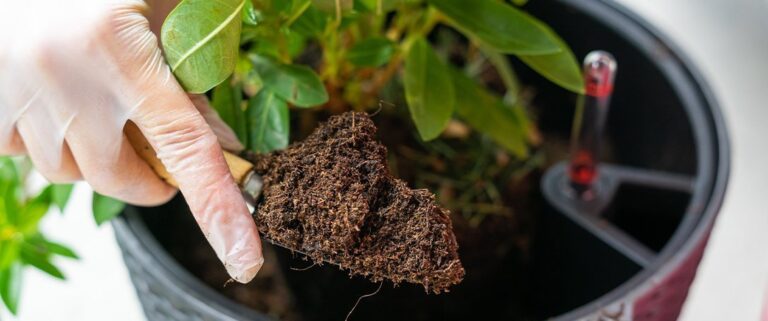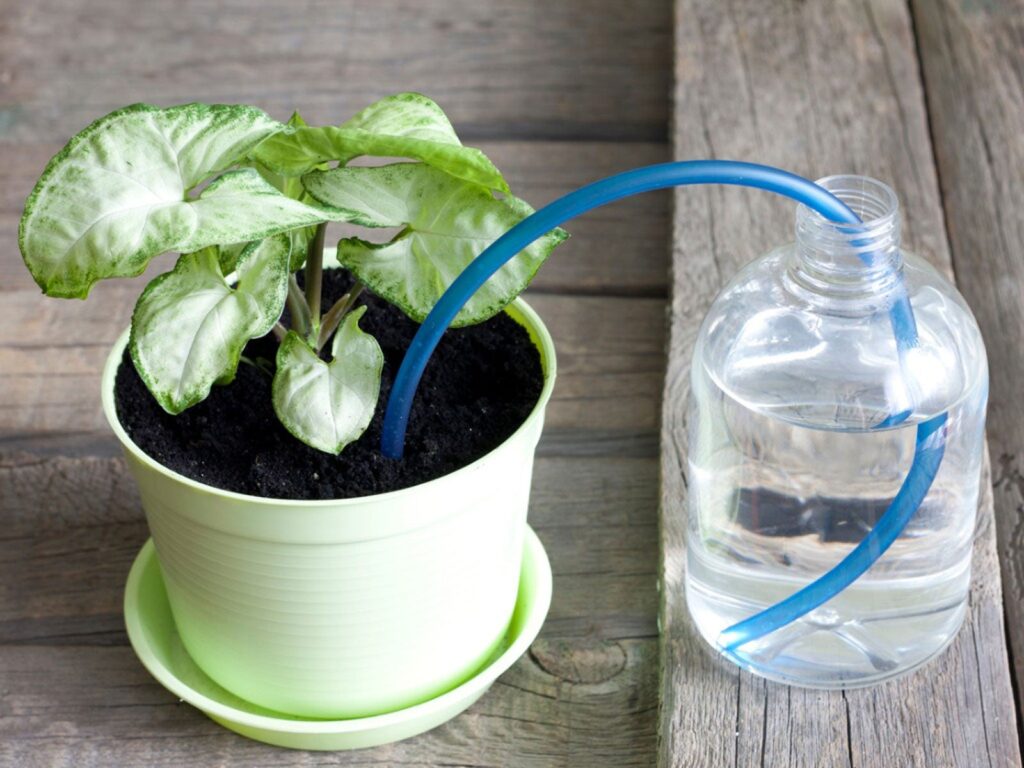Contents
Introduction
Spring is a magical time for gardeners and plant lovers alike. As the days get longer and the temperatures start to rise, your plants are waking up from their winter slumber and are ready to burst into new growth. But just like you might change your routine with the seasons, your plants need a little extra care during spring to thrive.
Why is this? Well, spring brings a mix of sunshine and showers that kickstart plant growth, but it also means your plants have different needs compared to winter. The soil warms up, encouraging roots to spread and new shoots to appear. With more sunlight, plants ramp up their photosynthesis, which means they’re using more energy and nutrients. So, to keep your garden looking its best, you need to adjust your care routine to match this new burst of life.
In this guide, we’ll walk you through everything you need to know about seasonal plant care for spring. We’ll cover how to prep your soil, choose the right fertilizer, prune and train your plants, and keep pests and diseases at bay. Plus, we’ll give you a handy checklist to keep track of what needs doing each month.
Whether you’re a seasoned gardener or just starting out, understanding these simple adjustments can make a big difference in how your plants grow and flourish this spring. So grab your gardening gloves, and let’s get started on making your garden the best it can be this season!
Understanding Spring Growth Patterns
Spring is like hitting the “refresh” button for your garden. After months of chilly weather and shorter days, your plants are ready to soak up the sun and start growing again. But before you dive into new planting or adjustments, it helps to understand how and why plants respond to spring changes.

Spring’s Impact on Plants
As the days get longer, your plants get a boost of sunlight, which is great news for their growth. Sunlight is like food for plants; it helps them make energy through a process called photosynthesis. With more light, plants can produce more energy and grow faster. This means you’ll see more vibrant leaves, blossoms, and even fruits as spring progresses.
But it’s not just about the light. Spring also warms up the soil, which is crucial for healthy root development. Warm soil encourages roots to spread out and absorb nutrients more effectively. This means your plants are better equipped to handle their growth spurt and start off strong.
Plant Hormones and Growth Stages
Plants have their own “chemical signals” that tell them when it’s time to grow. These are called plant hormones, and they’re like the coaches for your plants’ growth. In spring, hormones like gibberellins and auxins kick in, telling your plants to start growing new shoots and leaves.
Think of it as your plant waking up and deciding it’s time to get moving. Just like how you might feel more energetic in the spring, your plants are also ready to shake off their winter blues and put on a growth spurt.
So, understanding these basic spring growth patterns helps you give your plants the right care at the right time. By tuning into their needs, you can ensure they get everything they need to thrive and make the most of the exciting spring season.
Soil Preparation and Fertilization
Getting your soil ready for spring is like setting the stage for a big performance. The better you prepare, the more your plants will shine! Spring is the perfect time to make sure your garden soil is in top shape to support all the new growth that’s coming. Here’s how you can get your soil and fertilization practices just right.
Testing and Amending Soil
Before you start planting, it’s smart to check your soil’s health. Think of it as giving your garden a check-up. Testing your soil helps you understand what nutrients it’s missing and whether it’s too acidic or too alkaline. You can easily find soil test kits at garden centers or online, which will guide you on how to get a sample and send it off for analysis.
Once you know what your soil needs, it’s time to make improvements. If your soil test shows it’s lacking in nutrients, you might need to add compost or specific soil amendments. Compost is like a superfood for your soil—it enriches it with nutrients and improves its texture. If your soil is too acidic or alkaline, you can adjust it with products like lime or sulfur.
Choosing the Right Fertilizer
Fertilizers are like vitamins for your plants. They provide essential nutrients that help plants grow strong and healthy. There are many types of fertilizers, but the key is to choose one that matches your plants’ needs.

You might hear terms like “balanced,” “slow-release,” or “organic.” A balanced fertilizer has equal amounts of the main nutrients (nitrogen, phosphorus, and potassium), which is great for overall plant health. Slow-release fertilizers gradually feed your plants over time, so you don’t have to apply them as often. Organic fertilizers, made from natural materials, are excellent if you’re looking for an eco-friendly option.
When applying fertilizer, follow the instructions on the package to avoid giving too much, which can harm your plants. Typically, you’ll apply fertilizer a few times during the growing season to keep your plants well-fed.
Final Tips
Remember, healthy soil is the foundation for a thriving garden. By testing and amending your soil, and choosing the right fertilizer, you’ll set your plants up for a successful and vibrant spring. With these steps, you’ll ensure your garden gets off to a fantastic start and keeps growing strong all season long!
Pruning and Training
Spring is the perfect time to give your plants a little TLC through pruning and training. Just like a haircut can help you look your best, pruning helps your plants grow better and look healthier. And training your plants is like setting them up on a good path for growth. Here’s how you can use these techniques to keep your garden in tip-top shape.
When and How to Prune
Pruning might sound like a big task, but it’s actually pretty straightforward. Think of it as giving your plants a fresh start after their winter rest. The goal of pruning is to remove dead or damaged parts and encourage new, healthy growth.
The best time to prune most plants is in early spring, just before they start their big growth spurt. For flowering plants, it’s often best to prune after they’ve bloomed, depending on the type of plant. Use sharp, clean pruners to make cuts, and always trim back to a healthy bud or branch. This helps the plant focus its energy on new growth rather than trying to heal old, damaged parts.
Techniques for Effective Pruning
When pruning, aim to remove any dead, diseased, or crossing branches. For shrubs and trees, you’ll also want to shape them to encourage a balanced, open structure. This allows light and air to reach the inner branches, which helps prevent diseases and promotes better growth.
If you’re not sure where to start, a good rule of thumb is to take off no more than a third of the plant at a time. This keeps the plant from being stressed and helps it recover quickly.
Training Plants for Optimal Growth
Training your plants is like helping them grow in the right direction. It involves guiding your plants to grow in a certain shape or direction, which can be especially helpful for things like climbing plants or tomatoes.
You can use stakes, trellises, or cages to support plants as they grow. This keeps them upright, prevents them from sprawling, and often makes harvesting easier. For climbing plants, like beans or cucumbers, a trellis provides support and helps them grow upward rather than outwards.
Final Tips
Pruning and training might seem like extra work, but they’re key to a thriving garden. With a bit of effort, you’ll encourage your plants to grow strong, healthy, and beautifully. By starting in spring, you’ll set your garden up for success and enjoy a lush, vibrant landscape all season long!
Watering and Irrigation
Getting your watering routine right is like finding the perfect balance in your diet—it’s essential for your plants’ health and growth. Spring brings a mix of rain and sunshine, and understanding how to water your garden effectively can make a big difference. Let’s dive into how to keep your plants hydrated and happy!

Adjusting Watering Routines
As spring arrives, your plants start waking up and using more water to support their new growth. But that doesn’t mean you need to start watering more frequently right away. Spring weather can be unpredictable, with occasional rain showers that can help with watering.
Keep an eye on the weather and adjust your watering schedule based on rainfall. If it’s been rainy, you might not need to water as often. On the flip side, if there’s been a dry spell, your plants might need extra water. A good rule of thumb is to check the top inch of soil—if it’s dry, it’s time to water.
Signs of Overwatering or Underwatering
Getting the right amount of water can be tricky. Too little water can cause plants to wilt, while too much can lead to root problems. Watch for signs of both:
- Underwatering: Plants will droop, leaves might turn brown or crispy, and flowers may wilt.
- Overwatering: Look out for yellowing leaves, soggy soil, and root rot, which can be a sign that your plants are getting too much water.
Irrigation Systems and Techniques
If you’re looking for an easier way to manage watering, consider using an irrigation system. There are several options:
- Drip Irrigation: This system delivers water directly to the plant’s roots through a network of tubes and emitters. It’s efficient and helps conserve water.
- Soaker Hoses: These hoses release water slowly along their length, perfect for garden beds and rows.
- Sprinklers: Ideal for lawns and large areas, sprinklers distribute water evenly, but be mindful of wind and evaporation losses.
Tips for Efficient Water Use
To make the most of your watering efforts, try these tips:
- Water early in the morning or late in the evening to reduce evaporation.
- Use mulch around your plants to help retain moisture in the soil.
- Adjust your irrigation system based on the season and weather conditions.
Final Tips
Proper watering is crucial for a thriving garden, especially in spring when plants are gearing up for a growth spurt. By paying attention to your plants’ needs and adjusting your watering routine, you’ll ensure they get the right amount of hydration to grow strong and healthy. With these tips, you’ll keep your garden lush and vibrant throughout the season!
Pest and Disease Management
Spring isn’t just about new growth and blooming flowers; it’s also the time when pests and diseases start making their appearance. Just like you keep an eye out for common colds, it’s important to watch for signs of pests and diseases in your garden. Here’s how to keep your plants healthy and free from troublemakers.
Identifying Common Spring Pests
As the weather warms up, many insects come out to play. Some of the most common pests you might see include:
- Aphids: These tiny, soft-bodied insects love to munch on new plant growth. They can cause leaves to curl and become sticky.
- Caterpillars: These hungry larvae can chew through leaves and flowers, leaving your plants looking ragged.
- Slugs and Snails: These slimy critters are notorious for eating holes in leaves and young shoots.
Keep an eye out for these pests and check your plants regularly, especially the undersides of leaves where pests like to hide.
Signs of Pest Infestations
It’s not always easy to spot pests right away, but there are some clues to look for:
- Wilting Plants: If your plants are wilting despite adequate watering, pests might be to blame.
- Chewed Leaves: Look for holes or irregular edges on leaves and flowers.
- Sticky Residue: A sticky substance on leaves might indicate aphid activity.
Disease Prevention and Treatment
Spring also brings a higher risk of plant diseases, which can be just as damaging as pests. Here are a few common diseases to watch for:
- Powdery Mildew: This fungal disease appears as a white, powdery coating on leaves and stems. It thrives in warm, dry conditions.
- Rust: Rust causes orange, red, or brown spots on leaves and stems. It’s often seen in cool, damp weather.
- Leaf Spot: Dark, sunken spots on leaves can be a sign of bacterial or fungal infections.
To prevent diseases, ensure good air circulation around your plants and avoid overhead watering, which can spread fungal spores. Remove any diseased plant parts promptly to prevent the spread.
Strategies for Pest and Disease Control
Here are some effective ways to keep pests and diseases under control:
- Natural Predators: Encourage beneficial insects like ladybugs and lacewings that prey on pests.
- Organic Treatments: Use natural remedies like neem oil or insecticidal soap to manage pest problems without harsh chemicals.
- Regular Maintenance: Keep your garden tidy by removing debris and weeds where pests and diseases can hide.
Final Tips
Managing pests and diseases might seem like a chore, but it’s key to keeping your garden healthy and thriving. By staying vigilant and using these simple strategies, you’ll protect your plants from unwanted guests and ensure a vibrant, flourishing garden throughout the spring. Happy gardening!
Supporting New Growth
Spring is a busy time for your garden as plants shake off their winter dormancy and start pushing out new growth. To give them the best start, you’ll need to provide a little extra support. Think of it as giving your plants a helping hand to ensure they thrive. Here’s how you can support their growth and make the most of the season.
Mulching and Ground Cover
One of the simplest and most effective ways to support new growth is by using mulch. Mulch is like a protective blanket for your garden. It covers the soil and helps in several key ways:
- Moisture Retention: Mulch helps keep soil moist by reducing evaporation. This means your plants get a steady supply of water even during dry spells.
- Weed Control: A layer of mulch can help keep weeds at bay. Fewer weeds mean your plants don’t have to compete for nutrients and water.
- Temperature Regulation: Mulch acts as insulation, keeping soil temperatures steady and preventing extreme fluctuations that can stress plants.
You can use organic mulches like straw, wood chips, or compost, which also add nutrients back into the soil as they break down.
Supporting New Plants
If you’ve planted new seedlings or young plants this spring, they might need a bit of extra support to get established. Here’s what you can do:
- Acclimate Gradually: If you’ve started seeds indoors, gradually introduce them to outdoor conditions by placing them outside for a few hours each day. This process, known as “hardening off,” helps plants adjust to their new environment.
- Protect from Weather: Spring weather can be unpredictable. Protect young plants from late frosts and heavy rains by using cloches, row covers, or simple plastic sheeting.
- Staking and Support: For plants that grow tall or need extra stability, use stakes or cages to keep them upright. This is especially important for tomatoes, peppers, and other tall-growing vegetables.
Final Tips
Supporting new growth is all about giving your plants a strong start. By using mulch, providing gradual acclimation, and offering support where needed, you’ll help your plants establish themselves and grow robustly throughout the season. With these simple steps, you’ll enjoy a flourishing garden that’s ready to thrive in the springtime sunshine.
Seasonal Plant Care Checklist
Keeping track of your garden’s needs can sometimes feel like a juggling act, especially in the busy spring season. To make things easier, a checklist can be your best friend. This way, you won’t miss any important tasks and your plants will get the care they need to thrive. Here’s a handy checklist to guide you through spring plant care.
Monthly Maintenance Tasks
Here’s a month-by-month breakdown of what to keep an eye on throughout the spring:
- March
- Prepare Soil: Start by testing and amending your soil if needed. Add compost or other soil amendments to get it ready for planting.
- Prune: Prune trees and shrubs before they start their new growth. Remove dead or damaged branches to promote healthy growth.
- Start Seeds: If you’re growing plants from seeds, start them indoors or in a greenhouse. This gives them a head start before they go outside.
- April
- Plant New Seeds and Seedlings: As the weather warms up, start planting new seeds directly into the garden or transplant seedlings from indoors.
- Apply Fertilizer: Feed your plants with a balanced fertilizer to support their growth. Follow the instructions on the package for the right amount.
- Check for Pests: Keep an eye out for early signs of pests and diseases. Treat any issues promptly to prevent them from spreading.
- May
- Watering Routine: Adjust your watering schedule as plants start to grow more rapidly. Ensure they’re getting enough water but avoid overwatering.
- Mulch: Apply a fresh layer of mulch around your plants to help retain moisture and suppress weeds.
- Support Growing Plants: Add stakes or supports to plants that need them, such as tomatoes or tall flowers.
Key Activities to Monitor
Besides the monthly tasks, there are ongoing activities to keep in mind:
- Regular Weeding: Weeds can compete with your plants for nutrients and water. Regularly check your garden and remove weeds as they appear.
- Disease and Pest Checks: Continuously monitor for signs of disease or pests. Early detection makes treatment easier and more effective.
- Growth Monitoring: Observe your plants’ growth and adjust care as needed. For instance, if a plant is growing rapidly, it might need more water or nutrients.
Final Tips
With this checklist, you’ll have a clear guide to help you manage your garden’s needs throughout spring. By staying on top of these tasks, you’ll ensure your plants get the best care possible and enjoy a vibrant, healthy garden all season long. Happy gardening!
Conclusion
Spring is a vibrant and exciting time for your garden, and with the right care, your plants can truly flourish. By adjusting your routines to match the season, you’ll set your garden up for a season of healthy growth and beautiful blooms.
Recap of Spring Plant Care Tips
Here’s a quick summary of what you need to keep in mind for effective spring plant care:
- Understand Spring Growth: Recognize how increased daylight and warmer soil boost plant growth and adjust your care accordingly.
- Prepare Your Soil: Test and amend your soil to ensure it’s rich in nutrients and ready for planting. Choose the right fertilizers to support your plants’ needs.
- Prune and Train: Prune plants to remove dead or damaged parts and shape them for better growth. Use stakes and supports to help plants grow upright and strong.
- Water Wisely: Adjust your watering routine based on weather conditions and plant needs. Use irrigation systems and techniques to ensure efficient water use.
- Manage Pests and Diseases: Stay vigilant for signs of pests and diseases, and use natural or organic treatments to keep your plants healthy.
- Support New Growth: Apply mulch to retain moisture and support new plants with proper acclimation and protection from spring weather.
Encouragement for Ongoing Care
Remember, successful gardening is an ongoing process. Regular attention and adjustments will help you maintain a thriving garden throughout the season. By staying proactive and using the tips outlined in this guide, you’ll be well-equipped to handle the demands of spring and enjoy a lush, beautiful garden.
For further learning and support, consider exploring additional gardening resources, joining local gardening groups, or consulting with experts to deepen your knowledge and skills. Happy gardening, and here’s to a fantastic spring season!



